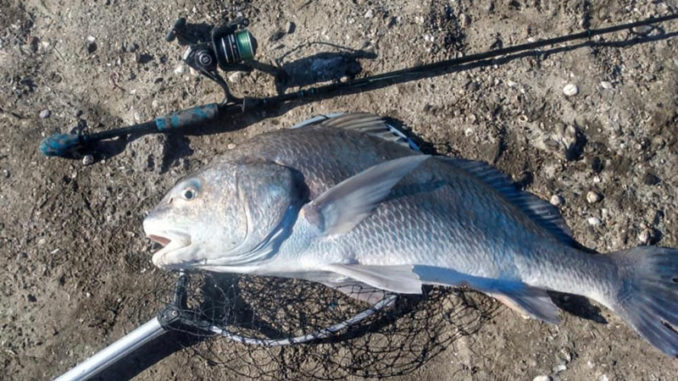
The black drum, fairly or unfairly referred to as the “Big Ugly,” is an inshore and estuarine fish that doesn’t get the attention it rightly deserves, according to Joshua Bourg, an avid angler from south Louisiana.
“They’re more abundant than bull reds, and black drum will fight just as hard — but in a different way — from the state fish,” he said. “During all my years of targeting them, I’ve noticed that black drum will pull as hard as you pull on them. This means, if you horse them, then they may end up breaking you off even on heavy duty line. But if you lightly finesse them, you can catch a 40-pounder on line as small as 6-pound monofilament. This makes the black drum the perfect fish to practice technique on.”
Plus, they are fun to target on a family fishing trip and a great fallback when other schooling fish are nowhere to be found, because there’s a proven method to locate them.
Where are they?
The two most-important indicators of where black drum are most likely to be are water depth and tide.

“You’ll want to find deep water, around 10 to 15 feet, in the marshes around larger canals, passes and deep-water docks,” Bourg said. “The black drum will gravitate to shelves around these areas that they can hang off of, or some sort of structure that they can feed on such as oyster reefs. You will also want to look for current lines where the water is moving at different speeds. That’s where you will need to cast your line.
“Keep in mind, as long as the tide is moving, the black drum will be feeding in these areas. They are harder to target during a slack tide, so plan your trip out to the marshes around an outgoing or incoming tide.”
Best baits, rigs
Bourg has caught black drum on a lot of different lures and live bait, but he said he’s had more luck with blue crab than anything else.
“There’s a technique to it,” he said. “When you are preparing the crab to go on the hook, remember to remove the pointed ends from each side and crack the shell. Don’t completely remove the shell, though, or the smaller fish will pick at your bait until there is no meat left for the black drum.”
Bourg said your rig is important. He always tries to go as light at possible.
“They seem to hit the crab more, if the tackle that I am using isn’t too noticeable,”he said. “I usually use a 5/0 or 6/0 circle hook on a Carolina rig.
“Your weight will depend on the strength of the current running. A heavier weight is better for a stronger current, and a lighter weight is better for a slower current.”
Parting advice
Bourg said sometimes when you hook up with a black drum, they will get hung up on structure, especially if you are fishing around pilings.
“Here’s a trick I wish I knew earlier on,” he said. “It’s important to not pressure the fish. Give the line some slack, wait 2 or 3 seconds, and try pulling again. The black drum will likely come out the structure. I’ve been able to save many rigs and catch massive fish by doing this.”